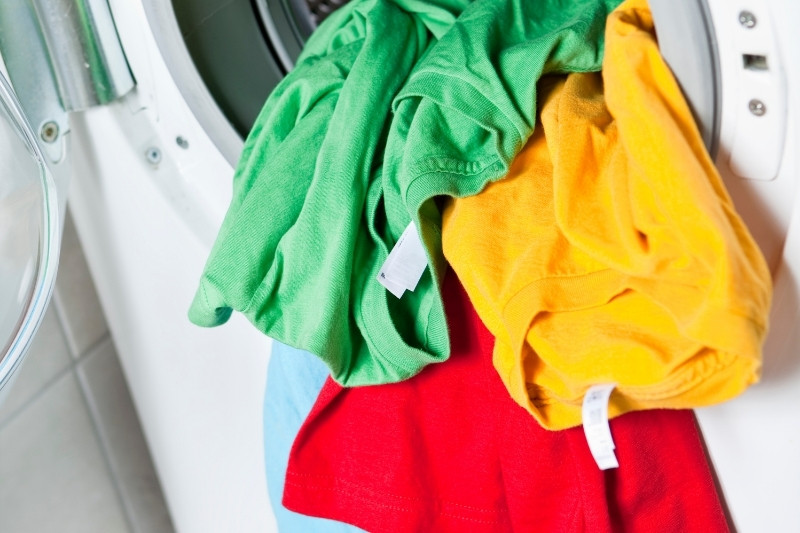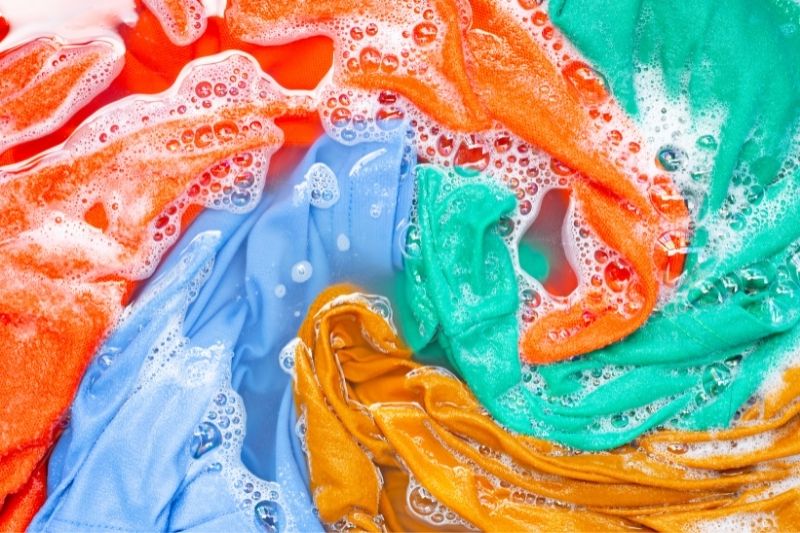When you’ve diligently separated your laundry, there’s nothing worse than watching your entire load slowly change colour in front of your eyes. Unless you’ve accidentally missed a red sock tucked in a pocket, the cause is usually due to colour running from one or more of the items being washed.
Sometimes a colour running isn’t quite as obvious. It might be as subtle as darker items bleeding into the wash and making other clothing look dingy. That can be easier to fix, but you still need to find the root cause.
So, when do colours start running and how low should you be keeping the temperature? Here’s everything you need to know.
What Temperature Do Colours Run At?

There’s no single temperature which guarantees the colours won’t run because a lot depends on the type of fabric, plus the dye used. Synthetic fabrics such as polyester and nylon tend to run less than natural fibres like cotton and wool.
Therefore, it’s not possible to say exactly at what temperature colours run at in the washing machine.
The warmer the temperature, the greater the risk of the colour running. This is because hotter temperatures cause the fibres in the clothing to open up and relax, releasing traces of the dye. Cooler temperatures keep the fibres clamped shut, minimising any colour leakage.
Modern detergents make it possible to wash clothing at cooler temperatures without sacrificing hygiene. If you choose a detergent specially formulated for cooler washes, you may not need to risk colours running at the higher temperatures.
Not all items are suitable to wash at low temperatures, even with the right detergent. Personal items such as towels and bedding should always be washed at a higher temperature to eliminate bacteria and germs.
Will All Coloured Clothing Run?

The dye in clothing can run for lots of different reasons, and many of these are due to the manufacturer.
It might be due to cheap and ineffective dyes, or a failure to properly set the colour in the fabric. Sometimes clothing is deliberately overdyed so the colours look more vivid while in the shop.
Whatever the reason, the effect is the same: colour dye which runs.
Not all clothing will shed its colour; some culprits are worse than others. Red, orange and pink clothing are some of the most notorious for releasing colour while being washed.
If you look at the care labels on garments, you’ll get a clue whether the colour is likely to run. Warnings such as “wash before wear”, “turn inside out to wash” and “use cold water” are all indications that colours running might be a problem.
Temperature plays a big part in whether coloured clothing runs. At cooler temperatures even the most unstable dyes may remain steadfast. However, as the temperature in the washing machine begins to rise, more colours may potentially run and bleed.
Can You Stop Colours Running in the Wash?

Aside from using a cooler temperature, there are some other steps you can take to reduce the likelihood of your laundry bleeding.
Adding half a cup of salt to the wash cycle or a cup of vinegar to the rinse cycle can help to prevent colour transfer, a simple yet effective measure.
You can also use a colour catcher. This is a commercial product which looks just like a baby wipe. You place it in the machine and it will ‘catch’ any dye transfer, preventing it from leaking onto the other clothing.
Overloading your washing machine increases the risk of colours running due to the increased friction. Giving your clothes room to properly circulate can help to reduce the chances of a bleed.
In many cases, colour transfer will stop being a problem once the garment has been washed a few times.
There aren’t many items of clothing which will continue to release dye each time its washed. By washing similar colours together, you can minimise the impact of colours running, but just remember to be particularly careful with brand new clothing.

In The Wash is your guide to the best laundry and cleaning products, tips and tricks. Our mission is to solve the UK’s cleaning and laundry dilemmas!




